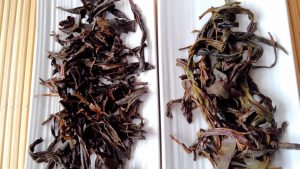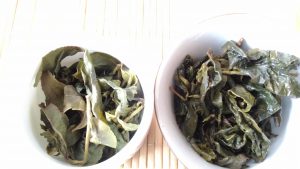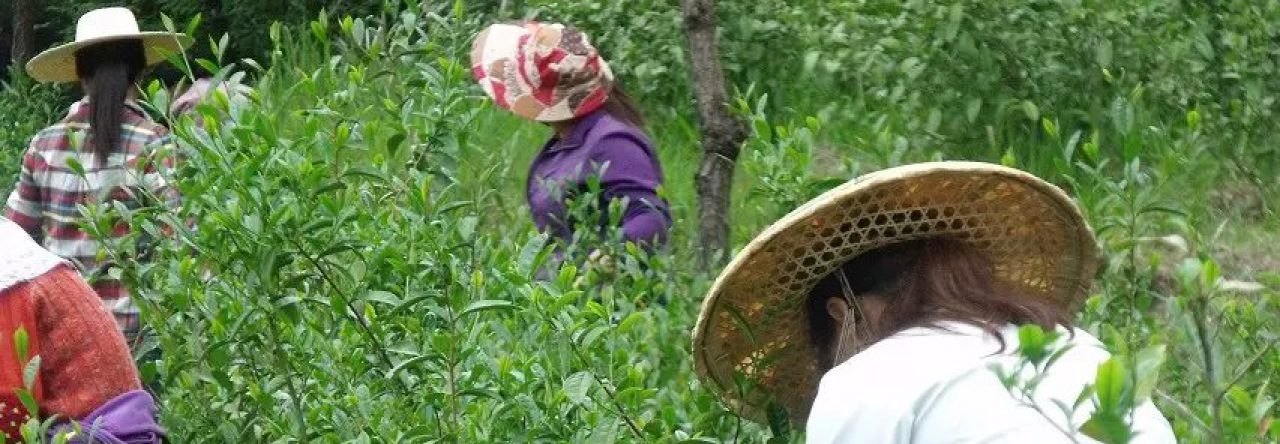A good tea friend, Magaret, who lived in Taiwan for years and have great passion for Taiwanese tea came for visit the other day. The best to help tea lovers to advance their learning is comparing the flavor and taste by actual tasting.
I don’t mind to the share the knowledge for free as long as the person who appreciates and can make good use of it correctly.
That day Magaret brought some teas that she received or bought from Taiwan:
UNKNOWN BOP BLACK TEA that packed in a tin jar with the mark of Lishan cha.
- Lishan is one beautiful mountain region where is known for high mountain (the highest peak is on 1945 mt.) agricultural products, including tea, of course. But when we opened the jar, we discovered black tea which was unlikely Taiwaese black tea. So the first we learnt was not to judge the tea in the package, before you actually have a chance to see it, touch it, smell it and drink it.
- The taste was not too bad considering it is the BOP quality grade, but definitely it’s not Lishan Oolong as it was printed on the jar.
- Authentic and Being correct are not just important in the journey of learning tea, the same philosophy can also apply to the relationships among people.
 During her visit to Taiwan, she received a small bag surprised 3g black tea as a gift sample
During her visit to Taiwan, she received a small bag surprised 3g black tea as a gift sample
- based the rough picking quality (there is very possible reason is those dried leaves were damage during the traveling)
- It’s dark color in twist shape.
- Under the situation that there was no any information about where it’s actually from Taiwan and tea tree cultiva; we could only try to select the twist big leaves tea. Therefore I chose the 2011 Liu Gui Wild tea oolong to check the difference. We meant to check the quality of tea picking.
- After the tasting, apparently the 3g sample that she received is black tea but the Liu Gui wild tea is oolong and the picking quality is better than the same that she received.

Margaret also brought a bag of Alishan oolong who she has concern about the quality and potential pesticide problems:
- Indeed the flavour and taste of that Alishan Oolong are not the top selection.
- The astringent and hard taste and the flat taste definitely arequestionable.
- When comparing it with the Alishan Oolong that I have in the centre, then it’s very clear to distinguish the differences based on the color of leaves, flavour and taste.
- The yellowish green color from the tea bottom which is not same as the normal fatty and juicy olive green color from authentic Alishan Oolong
At end we closed the fine day with good quality black tea from Bei Pu, XinZhu. Thanks Margaret who gave me this wonderful tea as gift.


Leave a Reply
You must be logged in to post a comment.